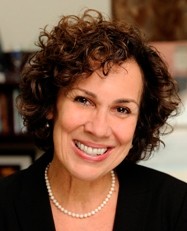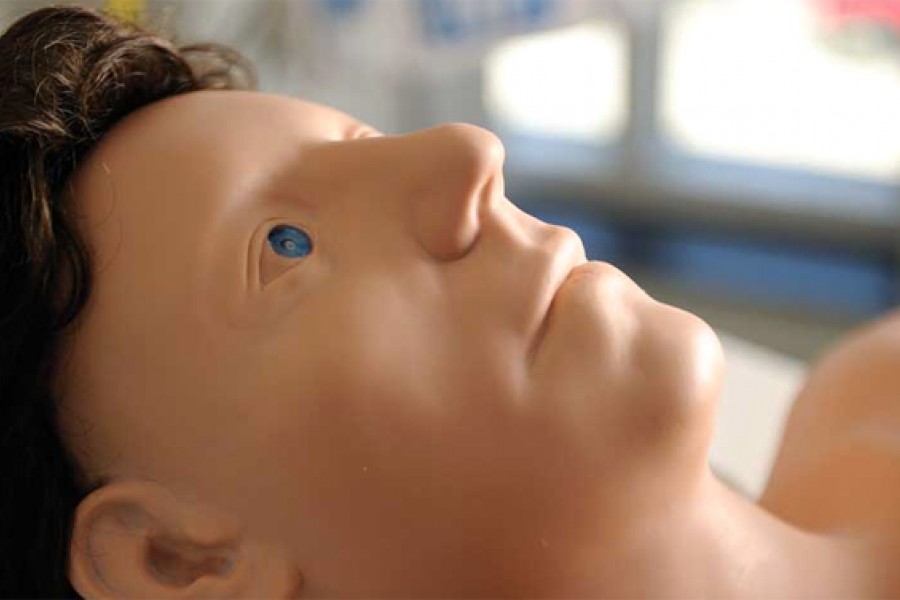This article is part of the Provost's Project on Innovation series

Image caption: Pamela Jeffries, Associate Dean for Academic Affairs at the School of Nursing
A teacher and mentor for more than three decades, School of Nursing Associate Dean Pamela Jeffries, Ph.D., has made a career, and a national reputation, of helping students learn better through innovative instruction.
As an advocate of inspired teaching everywhere, and across all disciplines, Jeffries believes that enabling students to learn effectively is fundamentally a creative occupation. Through her work, Jeffries has been at the forefront of improving how students are taught—and more to the point, how effectively they learn—so that they may in turn provide better care to patients in the hospital. As she explains, the traditional "sage on a stage" lecture format is one she always found lacking. "I'm a very visual person, and I'm also kinesthetic. Therefore I wanted hands on activities because I like to learn in those ways," she says. "I always wanted to try something different, for the students to be engaged and interactive. You've got to evaluate—is it working or not?—because you don't want to harm students."
From the very start of her nursing career, the obstacles to innovation were numerous. Medical knowledge and technology were exploding, but methods of instruction were hunkered down in the pedagogical bunker, remaining fixed and steadfastly conventional. Most nurses were doing their most important learning on the job once they completed nursing school, and to a significant extent this is still the case today. As Jeffries points out, "Many times our nursing graduates are not meeting the needs of our clinical facilities as reported by national leaders in nursing, whether it's community-based or acute care. We've heard for years and years that we need to produce better graduates." And so she began to pioneer the use of patient simulators, using lifelike animatronic human robots to simulate clinical events with human patients, a movement that has grown into one of the most powerful forces of modern health care education today. "Pilots practice on simulators, thank goodness, before we get in an airplane," she points out. "They simulate the bad weather, all these complications that they have to endure in flying. We're doing the same thing. There's an explosion, actually, of clinical simulations, not only in nursing but across the health care profession."
A staunch advocate of finding and using what works best, Jeffries maintains that while learning through the use of clinical simulation pedagogy should be a positive experience, it must also reflect both the variability and the intensity inherent in a clinical encounter. "It is often said [of nursing] that 'it's just a caring profession,' but you've got to be quite clever, you've got to apply the sciences," Jeffries says. "Go over to Johns Hopkins Hospital, go on the unit and watch a nurse in intensive care or on a medical/surgical floor or in a pediatric unit. Quick assessments are needed. Decisions are made all the time." In other words, the world of nursing in action is no place for the incapable or unprepared. Nurses today are on their feet—thinking—problem solving all day long. Their training needs to prepare them for that. "What I love about the concept of clinical simulations is that we can now set this environment and standardize some of the education," she says. "We can see how that nurse is thinking on his or her feet, how they're caring for that patient, how they're assessing. Do they have the acute knowledge, skills, and attitudes that we want?"
After the simulation event, which typically lasts for 20 minutes, comes the debriefing among the students and instructor, an approach fundamentally different from the traditional lecture-and-notes teaching model. "It's in an advocacy/inquiry encounter," Jeffries explains. "It's not threatening. It is not, 'Why didn't you do that? Why didn't you do this?' but rather, 'Help me understand why you prioritized in this manner.'" The great difference in this approach is that it provides feedback and enhances learning for both the student and the instructor. "Students let you know why they did what they did, and as an instructor, I am listening. Their answers, their framing, their perception help inform my practice as an educator. If there are gaps in the curriculum, I need to redo, I need to fix those gaps."
But building new models is never easy. Jeffries recalls episodes of determined indifference—if not outright resistance—to her ideas, and a general lack of progressive thinking that she still occasionally encounters. "There still is resistance," she says. "Any time you have change, you're going to have your early adopters, your late adopters, and then just the naysayers." She believes that the increasing use of human patient simulators has the potential to standardize nursing education to a level that has never been achieved before—a learning outcomes-focused goal that she thinks represents the wave of the future of education across all disciplines. And since arriving at Johns Hopkins three years ago, she has been eager to spread the word whenever and wherever she can. "I've been at the table talking about how we can work collaboratively as a group," she says of the broader need for more innovation in education. "We don't need to replicate different teaching centers nine different ways. We should have one center for teaching excellence where we prepare better educators, where there is some faculty development and where teaching is visible and recognized and there's an award system for teaching made at the central level, not at nine different divisions. That's one area that needs improvement, but I see forward movement in it. And as we move into interprofessional education, with the health care disciplines coming together to teach and facilitate our students, this notion of collaborative teaching and learning is very important."
Posted in Health, Science+Technology
Tagged medical simulation, nursing








